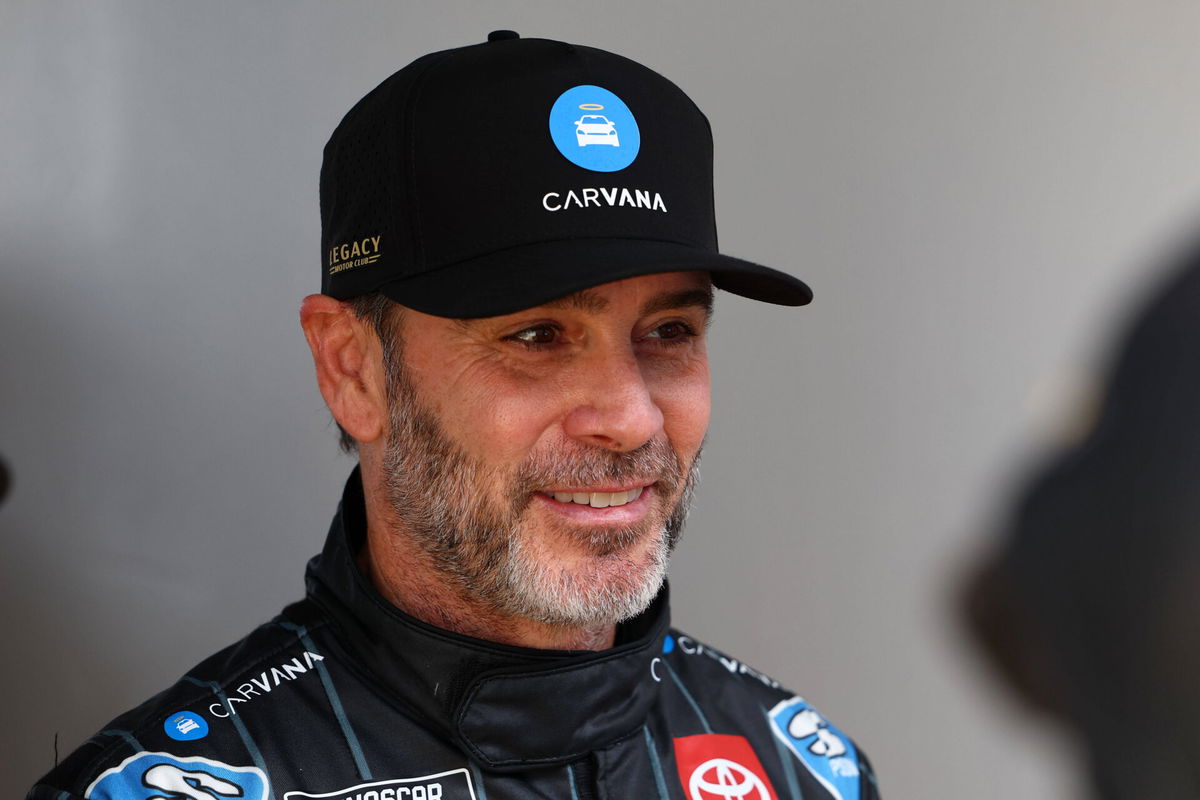
Imago
NASCAR, Motorsport, USA DAYTONA 500 Feb 16, 2025 Daytona Beach, Florida, USA NASCAR Cup Series driver Jimmie Johnson 84 walks to the drivers meeting before the Daytona 500 at Daytona International Speedway. Daytona Beach Daytona International Speedway Florida USA, EDITORIAL USE ONLY PUBLICATIONxINxGERxSUIxAUTxONLY Copyright: xPeterxCaseyx 20250216_mcd_bc1_47

Imago
NASCAR, Motorsport, USA DAYTONA 500 Feb 16, 2025 Daytona Beach, Florida, USA NASCAR Cup Series driver Jimmie Johnson 84 walks to the drivers meeting before the Daytona 500 at Daytona International Speedway. Daytona Beach Daytona International Speedway Florida USA, EDITORIAL USE ONLY PUBLICATIONxINxGERxSUIxAUTxONLY Copyright: xPeterxCaseyx 20250216_mcd_bc1_47
Legacy Motor Club hit the gas pedal hard in 2025 with a complete makeover, from unpacking furniture between Next Gen chassis to revamping leadership with fresh talent like Jacob Canter and Brian Campe. The shift to Toyota, new hires, and a team-wide reset have supercharged. This isn’t your typical organization; it is a crew resembling its soul brick by brick, with Jimmie Johnson’s clear-eyed vision steering the rebuild.
Watch What’s Trending Now!
And now with Johnson firmly behind the wheel as a team owner, this is no longer a sideline gig; it is a battlefield. And he has pulled back the curtain on the real cost of crossing the finish line.
ADVERTISEMENT
Jimmie Johnson opens up about needing to generate revenue amid a business that eats money
Legacy Motor Club didn’t just appear; it rolled into existence as part of NASCAR’s boldest shake-up in recent memory. In late 2021, Maury Gallagher scooped up Richard Petty Motorsports, rebranding it as Petty GMS Racing. Fast forward to early 2023, and seven-time Cup champion Jimmie Johnson strapped in as a co-owner, instantly sparking the transformation into legacy motor club, a name that fuses NASCAR’s legendary heritage with an unapologetic push toward a faster, flashier future.
However, January 2025 marked a seismic shift. Johnson became LMC’s majority owner after Knighthead Management made a substantial minority investment and long-time partner Gallagher stepped back from daily operations. Now fully in the driver’s seat, figuratively, Johnson has returned to Charlotte to run the show. Calling the deal a game-changer, he made it clear this partnership is designed to supercharge both on-track speed and fan-side excitement. However, this journey wasn’t without its lumps.
Reflecting on his time with LMC so far, Johnson was candid about the business side of handling such a big organization while speaking on Kevin Harvick’s Happy Hour. He said, “But with that being said, I have had far less time in the competition group than I have in the business ops group. Just the need to generate revenue and to help steer and run and operate the company— I just have had more time there, which has been interesting.”
ADVERTISEMENT
On the asphalt, LMC’s competitive fire is carried by its two full-time Cup Series entries, the No. 42 piloted by John Hunter Nemechek and the iconic No. 43 driven by Erik Jones. Despite placing the LMC cars in the top 26, the organization has seen multiple top tens and a few top fives so far.
But Kevin Harvick didn’t mince words. He made a comment with, “Well, it eats money.” And Johnson’s reply was instant, agreeing and confessing, “It does eat money.” Harvick added the knockout punch, calling it a money-eating machine and a hungry beast. As soon as anyone gets behind a business and this part of it, that person already has higher risks than rewards. This exchange strips away the glamor, revealing that owning a NASCAR team is equal parts adrenaline and endless expense.
ADVERTISEMENT
Back in the Charlotte office, Jimmie Johnson’s leadership is under the microscope, and it is delivering. Knighthead’s financial muscle gives him the tools to reimagine the operation, but it’s his own hands-on approach, combined with Zwift leadership reconstruction, that is shaping LMC into a leaner, meaner contender. This isn’t just about running a race team; it is about crafting a sustainable NASCAR powerhouse built to compete and win for years to come. And amid his driver delivering a blunt reality check on LMC, Johnson is raising eyebrows on the Gen 7 car, calling for some modifications.
Jimmie Johnson reveals the changes he would like to see amid Next-Gen concerns
Jimmie Johnson offered a vivid glimpse into how stepping into the business side of NASCAR has reshaped his perspective on the driver’s craft. He spoke about the fine margins that define success, or something as subtle as a half-tweak in a car’s setup can unlock a three-tenths-of-a-second gap in lap time. That revelation, he admitted, gave him a deeper respect for both the technical and mental demands drivers face, and reaching his dual role as team owner and competitor.
ADVERTISEMENT
However, his remarks delivered a mix of frustration. He went on to say, “I would like to see some changes. You know, I think a car that gains side force and yaw is a better car, one that drives better, more interesting, put on a better show, so this car does not do that. But to make those changes, you’ll have to have three OEMs submit wind tunnel time, with all the expenses that go with it. I know it’s a slow-moving machine.”
That conversation also drifted toward the tire design, a topic that has become even more pressing since the debut of the Next Gen car. NASCAR’s latest tire format features an 18-inch wheel and a much lower profile sidewall, a move aimed at improving grip and echoing the feel of high-performance street tires. And Johnson noted that taller, stiffer sidewalls on the current NASCAR tires have reduced the cars’ flexibility and generated side force compared to the older models. In other words, part of the challenge isn’t just the car’s design; it is also the way the tires interact with it on the track. But with no recent development on the Next Gen cars, the NASCAR community shouldn’t expect any changes soon.
ADVERTISEMENT
ADVERTISEMENT
ADVERTISEMENT

